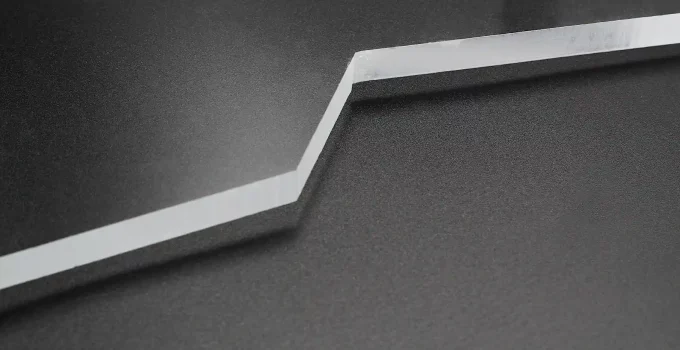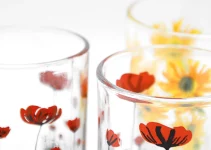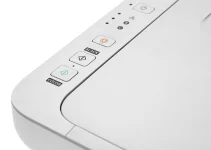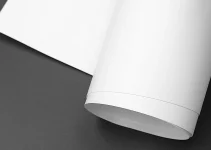Let’s see what we need to know when we’re answering the question can you sublimate on acrylic.
First of all, we can definitely sublimate on acrylic.
The reason for that straightforward yes answer is because acrylic is a polymer.
As this article delves deeper and deeper into certain aspects related to sublimation, you’ll understand why the fact that acrylic is a polymer is the crucial information that we need to know when we want to answer a question like can you sublimate on acrylic.
This is going to be an interesting guide on how to sublimate on acrylic. Most importantly, we should see which instruments we need.
While sublimation is a wonderful craft that helps us create beautiful designs on a wide variety of materials, it’s still a craft that requires quite a few essential pieces of equipment and tools.
Thus, besides establishing why we can sublimate on acrylic, the most important part of this guide will focus on how to sublimate on this material and what tools we need for whatever projects we want to pursue.
Can You Sublimate on Acrylic? Yes, Definitely
We’ve already established that the answer to the question can you sublimate on acrylic is yes.
Now, let’s understand why that’s possible because there are certainly materials that aren’t fit for sublimation.
For example, when it comes to t-shirts, we know that we can sublimate on polyester and polyester blends that contain more than 50%-65% polyester but it’s not actually recommended to try to heat press our design on cotton or natural fibers.
It’s just that natural fibers can’t absorb ink as well as artificial fibers. That’s the thing that sets them apart. And the design, the dye, will fade faster the more you wash your natural fibers/cotton objects.
Every object that has a high polyester content is game on, like polyester mouse pads, polyester aprons, polyester cushion covers, etc.
We also know that we can sublimate on ceramic mugs, tiles, vases, etc. Ceramic is heat resistant and, once the dye sticks to any ceramic object, the design won’t peel off. We can use our ceramic projects in the microwave and in the dishwasher without damaging parts of our designs.
Natural and synthetic polymers, like teflon and nylon, are also a good fit for sublimation dyes so we can heat press our designs on keychains, notebooks, bookmarks, beer can cooler sleeves, skinny tumblers, etc.
Furthermore, we can also sublimate on mylar bags. And glass sheets, aluminum sheets, stainless steel etc.
After this short list of materials that work beautifully for this craft, it’s time to understand why the answer to the question can you sublimate on acrylic is yes.
What is acrylic?
Since sublimation mainly implies using a sublimation printer or an inkjet printer converted to sublimation, using sublimation inks and sublimation paper, then using a heat press to transfer the design from the paper onto the acrylic object, we need materials that can absorb the ink really well and we need materials that can withstand heat.
Acrylic is actually a material that can be beautifully and successfully used for the sublimation craft. We can explore our creativity and we can create delightful objects, whether we’re amateur crafters or if we’re running a business.
Acrylic is a durable, scratch resistant, and easy to clean material. It means that the design can withstand the test of time.
Most importantly, acrylic is a synthetic polymer and we’ve already established that natural and synthetic polymers (plastics) are very good to be sublimated on.
It is also known as acrylate polymer. The more popular name for it is plexiglass.
It is a versatile plastic material that has a variety of purposes and benefits. You can find a lot more about this transparent thermoplastic here.
The easiest way to buy acrylic is in the form of sheets of various thicknesses.
For sublimation, a thicker sheet is more preferable because we use a heat press to transfer the design from the sublimation paper to the acrylic sheet. We want to prevent any possible warping and even slight melting.
Besides sheets of various thickness and colors, we can also buy acrylic in the form of rods or tubes. Although, for our sublimation projects, we’re mainly interested in cut-to-size sheets.
How to choose acrylic sheets for sublimation: cast acrylic
An important thing we must establish is that we need cast acrylic for sublimation.
Extruded acrylic is the option we shouldn’t use.
The reason for always looking for cast acrylic is simple: it offers better thermal performance.
Thus, it has a higher melting point and heat resistance, which is totally needed since we’re using a heat press to transfer our designs onto the material.
Acrylic is available in a spectrum of colors and opacities. As we know from t-shirts, we are already aware that sublimation works best on white or lighter colors.
While we can buy acrylic sheets in a wide variety of colors, I recommend sticking to white, lighter colors. Cut-to-size white acrylic sheets are great.
Of course, we can also buy transparent acrylic sheets. If we sublimate on transparent acrylic sheets, we will somewhat still be able to see through the sheet even after the print has been heat transferred. That can work for certain projects, like creating unique keyrings, etc. Don’t underestimate transparent acrylic sheets.
Also, if you buy transparent acrylic sheets and you want to get rid of their transparency you can paint the backside with white, gray or blue paint so that’s a solution.
Of course, to prevent the acrylic sheets from warping from the heat or from melting from the heat press, I recommend buying sheets that are thick. The thicker the better for durability and for total success throughout the sublimation process. And use cast acrylic.
Acrylic keychains for sublimation
Furthermore, as part of the answer to the question can you sublimate on acrylic, I absolutely have to mention personalizing blank keychains.
If you want to focus on making beautiful, interesting, personalized keychains, acrylic is a great choice.
MDF keychain blanks are another wonderful option. Their heat resistance is fantastic.
Just don’t forget that cast acrylic works best for any crafts that involve heat.
Custom acrylic keychains can successfully be part of a business of an amateur craft.
For a really cheap price, for about $10-$15, we can buy acrylic keychain blanks for sublimation.
They come in large batches, like 30-40 pieces acrylic blanks, tassels, key chain rings, and jump rings.
I recommend buying acrylic blanks for sublimation because they’re thicker so that they won’t melt where they’re under the heat press. Those that are made for vinyl can be quite thin so there’s a risk if you buy those, although there are some that work for sublimation, too.
If we want to make custom acrylic keychains, since the designs are so small, we can imprint one single sheet of sublimation paper with multiple designs for a large number of keychains. And then we have to heat transfer them, which makes everything faster.
Thus, even if we use a 8.5 sublimation printer, we can manage to customize multiple keychains quite quickly. The number increases even more for 13 x 19 sublimation printers.
How to sublimate acrylic keychains
You can check out this YouTube guide on how to sublimate acrylic keychains.
This guide on sublimating acrylic keychains can also be adapted to sublimating on cast acrylic sheets. The steps can be quite similar.
Printing the designs
Obviously, the first thing we need is to get our designs on the sublimation paper.
We need a sublimation printer or a piezo inkjet printer converted to sublimation. You can check out my reviews for the best sublimation printers for beginners if you want to discover more about which equipment we need to use.
Besides the printer, we need sublimation dyes and sublimation paper.
To create our designs, I recommend using graphic design software and apps for the best printing results. Canva and GIMP are great if you want free software. But you can also use Photoshop, Adobe Illustrator, Gravit, Affinity, Cricut Design Space, and Sawgrass Creative Studio.
Since keychains are small, round pieces, usually having a 2-3 inches diameter, we can print multiple designs on the same sheet of paper.
Next, cut up each individual design. It doesn’t have to be a perfect cut, you can leave a good chunk of white paper around your design, it doesn’t matter.
Leave some space between your individual designs when you print them on the same sheet of paper.
Prepare the acrylic keychain blanks
Most acrylic blanks shaped for keychains will come with protective film on one or both sides.
You absolutely need to remove the protective films when you’re ready to use the heat press.
Using the heat press
Add a sheet of butcher paper on the heat plate.
Put the acrylic keychain blank over the design and flip it over. Thus, the paper ends on top of the acrylic blank. The blank side of the paper sheet ends on top, that’s what we see.
Add as many designs as your heat press allows.
I recommend pressing it at 385 degrees F for 60 seconds.
However, some blank keychains for sublimation will come with their own recommendations for heat and time. Some might recommend 374 degrees F for 40 seconds so you must check out this kind of info.
Prepare a water dish
Once the heat press is done, put on your heat resistant gloves and remove them from the heat press.
Insert them into water just as they are, with the paper still stuck to them. Don’t use ice cold water because we don’t want any cracks. I recommend using warm water.
Use a brush or something to make sure they’re fully submerged in the water.
Once the paper is completely soaked up and they’ve cooled down, you can remove the paper.
This is the moment of truth, when you see if your design was successfully sublimated on your acrylic piece of material.
Next, we can add some paint or glitter on the backside with a small paintbrush. There are multiple personalization options. To make the paint and the glitter resistant and durable, you can add a layer of glue, Mod Podge glue is my favorite, over the paint and the glitter.
What We Need for Acrylic Sublimation
I guess you might have already gathered what we need for acrylic sublimation but let’s make a concrete list of things you should expect to need for this craft.
Sublimation printer
Of course, we can’t do anything without a printer.
If you want a more in-depth approach, check out my article on what printer we can use for sublimation, for any material, not only cast acrylic.
We have two options.
First, we can choose to buy a dye-sublimation printer, like the Sawgrass SG500, Sawgrass SG1000, Epson SureColor F170, Epson SureColor F570, etc. These are amazing but they tend to be quite expensive.
For more affordable options, we can convert piezo inkjet printers to sublimation, mainly models from Epson.
These are printers like the Epson EcoTank ET-4700, Epson EcoTank ET-2803, Epson EcoTank ET-15000, Epson WorkForce WF-7720, etc.
In order to convert any printers like these we need to buy sublimation inks that are made for our specific model. The set of dyes will comprise 4 colors: cyan, yellow, magenta, and black.
Don’t use the inks that come with the printer because those are made for regular printing.
Instead, insert the sublimation dyes into the ink tanks and you’re good to go.
Last but not least, we need sublimation paper that will match the size of our tray. Usually, that means 8.5 x 14 inches or 13 x 19 inches.
Design software and apps
A printer like the Sawgrass SG500 or the Sawgrass SG1000 will come with their own design software, called the Sawgrass Creative Studio.
Otherwise, you can use Canva and GIMP for free.
Or you can choose to use Adobe Photoshop, Adobe Illustrator, Gravit, Affinity, CoreIDrew, etc.
Heat press
Of course, a heat press is just as crucial as the sublimation printer, the dyes and the paper.
Without it, we cannot transfer our designs from the paper to the material we want.
A 380 to 400 degrees heat press is crucial. It’s usually pressed for 60 seconds. Light to medium pressure works well.
Heat resistant gloves are also necessary if you want to touch the objects as soon as they’re done in the heat press.
How to sublimate on cast acrylic sheets
While I covered how to sublimate acrylic keychains, which are totally awesome and wonderful, it’s time to cover the bigger materials, like cut-to-size acrylic sheets.
We need cast acrylic sheets because they have the highest heat resistance so they won’t warp or melt.
Or maybe you’ll find sublimation blank acrylic sheets. These are a white matte color.
Overall, what matters is that the sheets need to be thick.
If you sublimate on clear acrylic, since sublimation dyes are transparent, we’ll be able to see through the acrylic with the design on it. It will have a stain glass effect.
If the see-through aspect bothers you, you can paint the back with white, gray, blue or any other color paint you want.
Or you can add white vinyl on the back and the design will stand out. Or you can use any other vinyl color that will match your design.
If you want to make it sparkle, put glitter on the back. Use Modge Podge to make the glitter stick. And then add another layer of Modge Podge to make it durable. Over the paint, too.
Thus, a clear acrylic sheet is certainly nice for personalization and it’s also very easy to use so I recommend the clear ones.
Other than that, the steps are pretty similar to what we talked about when we learned how to sublimate acrylic keychains.
How to sublimate on cast acrylic sheets in 5 steps
Let’s see which is the easiest way to sublimate on acrylic sheets.
For a very helpful visual guide, I recommend watching this video.
1. Use butcher paper
We need to cover both the bottom and the top heat plates with protective paper. Most people use butcher paper.
Cover your bottom heat plate with a sheet of butcher paper.
Furthermore, I recommend adding the acrylic sheet with the design between a folded butcher paper, like an envelope of butcher paper.
If you don’t have butcher paper, you can use regular copy paper. Just make sure to use enough sheets to cover the project and the heat plate. And maybe use two-three layers for extra security. Both on the heat plate and on top of the acrylic sheet.
Most people prefer using butcher paper but copy paper is a good inexpensive alternative.
2. Take your acrylic sheet and remove any protective layers if it has any.
3. Put the acrylic sheet over the design and flip it over and then lay it down on the butcher paper
The blank side of the sheet of paper is that one facing us, the acrylic sheet is under the sheet of paper with the design covering it.
We don’t need to mirror the images for sublimation if we’re using transparent acrylic sheets because we can turn it however we want.
You can use light to medium pressure, at 400 degrees F, for 60 seconds.
4. Press the acrylic sheet down
This is a kind of an optional step. You can do it if you experience any warping.
Use your heat resistant gloves to remove the acrylic sheet with the paper glued to it from the heat press.
Basically, once we remove the acrylic sheet from the heat press, we can place it under something heavy to keep it from warping, until it cools down for a little bit.
5. Prepare a bowl of water, warm water preferably
Insert the sheet into the bowl with water, making sure that the sheet is completely submerged. Leave it in there until the paper is completely soaked.
Then it can be easily removed and the design will reveal itself in all its glory.
Don’t worry, you can’t damage the design because it’s already part of the acrylic sheet and it’s durable.
All in all, what you should really take away from my guide answering the question can you sublimate on acrylic is that it’s totally possible and the designs will turn out beautifully as long as you pick the right materials and use the proper equipment.




